Orthodontics
4 min read
Aug 21, 2025
Orthodontics & Braces Statistics (Adults + Kids)
Orthodontics has transformed from a niche medical service for teenagers into a booming sector that spans all ages. Today, both adults and children seek orthodontic treatment to improve their smiles, fix bite issues, and boost self-confidence.
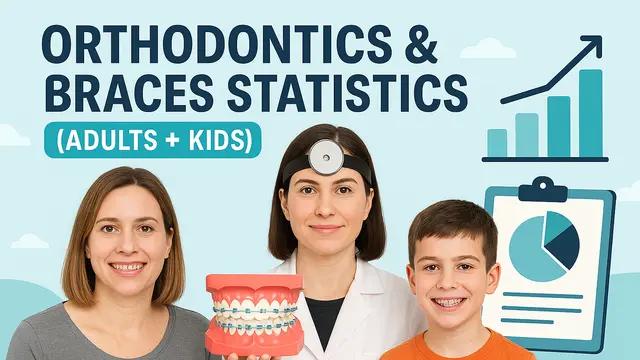
The Growing Demand for Braces and Orthodontic Care
Orthodontic care has seen a sharp rise in demand over the last decade. More people are recognizing that crooked teeth or misaligned bites aren’t just cosmetic issues. They can cause long-term dental health problems such as tooth decay, gum disease, and jaw discomfort. This trend has led to increased orthodontic consultations and treatments across all age groups.
According to the American Association of Orthodontists (AAO), nearly 1 in 3 orthodontic patients is now an adult. This statistic reflects a societal shift where adults prioritize oral aesthetics and function later in life. Moreover, advancements in discreet orthodontic options like clear aligners have made treatment more appealing to older demographics (Hello Tend).
Average Age for Braces: Kids, Teens, and Adults
Braces are most effective when started at the right time. For children, early orthodontic evaluations typically begin at age 7, allowing orthodontists to monitor growth and intervene early if needed (NewMouth). This is known as Phase 1 Orthodontics and can involve retainers, spacers, or partial braces to guide jaw development.
By ages 10 to 14, most kids begin comprehensive orthodontic treatment. This is when full braces or aligners are commonly recommended, as the jaw is still growing and teeth are easier to move into place (Band & Wire Orthodontics).
Adults, however, are not restricted by age. People in their 20s, 30s, 40s, and beyond are starting orthodontic treatments for both cosmetic and functional reasons (Coastline Orthodontics).
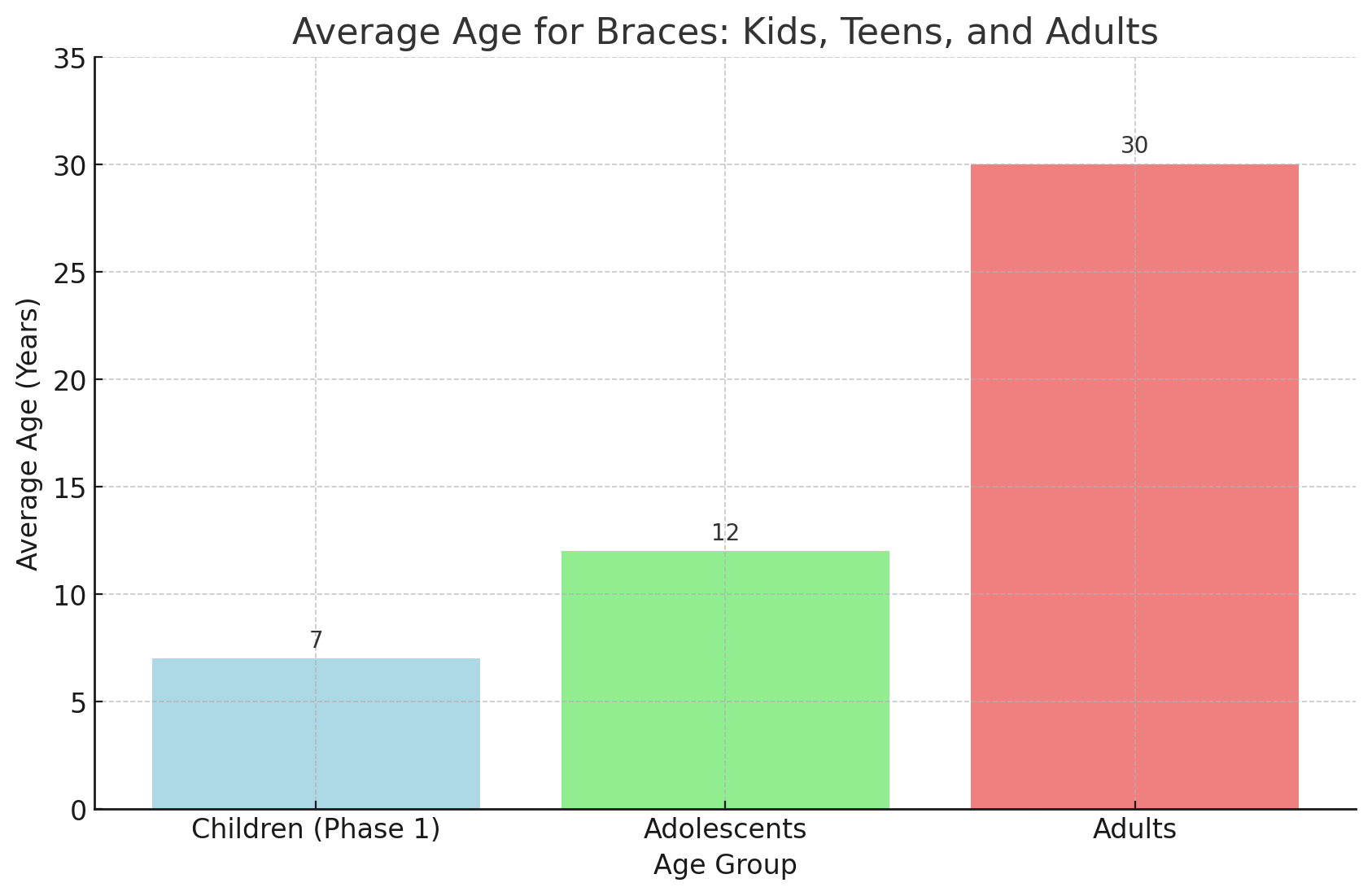
This age data underscores the importance of individualized care. While children are monitored for growth, adults undergo orthodontics to correct long-standing issues or cosmetic concerns.
Adult Orthodontic Treatment: By the Numbers
Adult orthodontic treatment is no longer rare. Several factors have driven this surge:
Increased focus on personal aesthetics and professional image
More accessible and discreet treatments like Invisalign
Rising awareness of oral health benefits linked to straighter teeth
The data reflects this shift:
25% of orthodontic patients are adults (Zocdoc)
Over 1.5 million adults start treatment annually (Varghese Orthodontics)
A staggering 70% of adults could benefit from orthodontic care to correct misalignments and prevent future dental issues (Varghese Orthodontics)
Since 1989, adult orthodontic treatment has risen by 40% (Hello Tend)
This data shows that orthodontic treatment is no longer something to "grow out of". It’s something many people "grow into."
Clear Aligners vs. Traditional Braces: The Shift in Preference
The orthodontic world has witnessed a major transformation in patient preferences. Clear aligners are rapidly gaining popularity for several reasons:
Aesthetic Appeal: They are nearly invisible, which is especially important for adults in professional or social settings (AlignerCo).
Convenience: Clear aligners require fewer office visits and can be removed for eating and cleaning (Cornerstone Smiles).
Comfort: Aligners avoid the wires and brackets that often cause mouth irritation.
However, it’s important to note that clear aligners work best for mild to moderate cases. Severe malocclusions, jaw discrepancies, or complicated dental issues typically require traditional braces (National Library of Medicine).
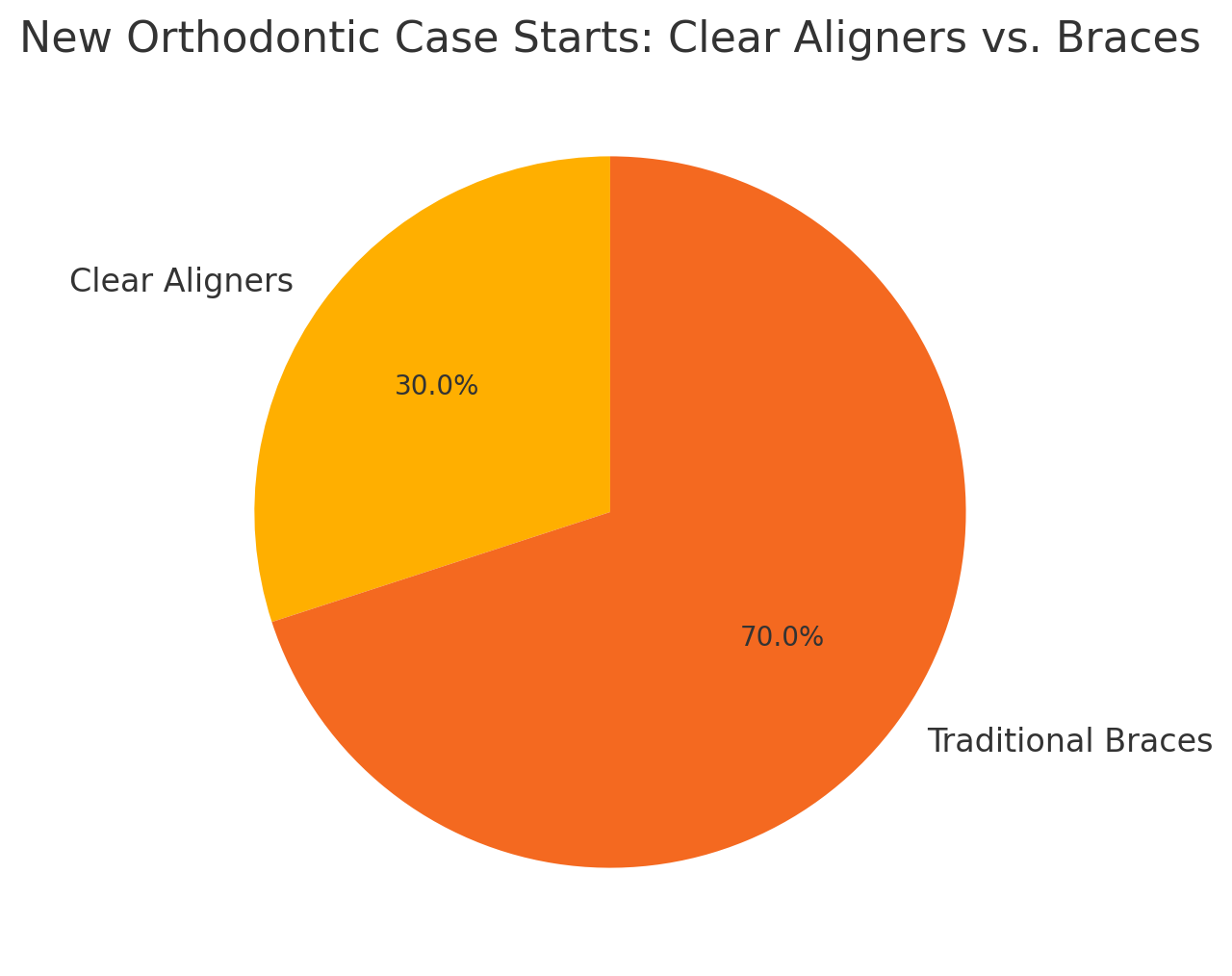
These statistics show that while traditional braces still dominate, aligners are carving out a significant share of the market, especially among adults.
Cost of Orthodontic Treatment (2025 Data)
Orthodontic treatment costs vary based on the complexity of the case and the type of braces or aligners chosen. Here's a breakdown of typical U.S. prices:
Treatment Type | Minimum Cost ($) | Maximum Cost ($) |
Traditional Braces | 4,000 | 8,000 |
Clear Aligners | 3,000 | 9,000 |
Lingual/Ceramic Braces | 8,000 | 13,000 |
Sources: Verywell Health, Verywell Family, Allure
Additional Cost Considerations:
Insurance Coverage: Most dental plans cover part of traditional braces but may not cover clear aligners.
Financing Options: Many orthodontists offer monthly payment plans.
At-Home Aligners: Some companies offer at-home aligners starting around $2,000, but these are controversial due to lack of professional supervision.
Treatment Timelines
Treatment length varies based on the method and severity of the case:
Traditional Braces: 18–36 months
Clear Aligners: 12–18 months
Lingual Braces: 24–36 months
Early-phase treatment for children can shorten the timeline for full braces later on.
Key Reasons Adults Are Seeking Braces
The adult orthodontic boom is about more than just looks. Here’s why:
Cosmetic Confidence: Adults want to improve their smiles for personal and professional reasons. Straight teeth are often associated with success and attractiveness (Cornerstone Smiles).
Oral Health Benefits: Straight teeth are easier to clean, reducing the risk of gum disease, cavities, and abnormal tooth wear (Varghese Orthodontics).
New Technology: Innovations like clear aligners make treatment more discreet and less intrusive, appealing to adult lifestyles (NewMouth).
Jaw Alignment & TMJ Relief: Orthodontics can help alleviate jaw pain, headaches, and other symptoms of temporomandibular joint dysfunction (TMJ).
Summary of Trends
Statistic | Value |
Adults in orthodontic treatment | 25% of all patients |
Clear aligner market share | 30% of new case starts |
Average age for first orthodontic eval | 7 years old (Phase 1) |
Average treatment length (aligners) | 12–18 months |
Average treatment cost (all types) | $4,000–$13,000 USD |
What Is the Average Age to Start Orthodontic Treatment?
Orthodontic treatment can begin at different ages depending on the individual’s needs. For children, evaluations usually start at age 7 to catch early jaw or bite issues and guide growth. Most comprehensive treatments with braces or aligners begin between ages 10 and 14, when teeth and jaws are still developing. Adults, however, can begin treatment at any age, whether in their 20s, 30s, 40s, or beyond, since orthodontics can address both cosmetic and long-standing dental concerns.
Why Are More Adults Choosing Orthodontic Treatment?
The rise in adult orthodontics is driven by several factors. Many adults seek straighter teeth for improved confidence and professional image, while others prioritize oral health, since aligned teeth are easier to clean and maintain. Advances in clear aligners have also made treatment more discreet and convenient. Data shows that 25% of orthodontic patients are adults, with over 1.5 million adults starting treatment annually, underscoring a major shift in demand.
How Do Clear Aligners Compare to Traditional Braces?
Clear aligners are increasingly popular due to their nearly invisible appearance, removability, and comfort compared to traditional braces. They appeal especially to adults who prefer a discreet option. However, aligners are best for mild to moderate alignment issues, while severe cases often require traditional braces. Although braces still dominate overall, aligners account for about 30% of new treatments, signaling a strong trend in patient preference.
What Is the Typical Cost and Duration of Orthodontic Treatment?
The cost of orthodontic care depends on the method and complexity of treatment. Traditional braces typically range from $4,000–$8,000, clear aligners from $3,000–$9,000, and lingual or ceramic braces from $8,000–$13,000. Insurance may cover part of the cost, particularly for traditional braces, and many practices offer financing plans. Treatment time also varies: traditional braces often take 18–36 months, clear aligners 12–18 months, and lingual braces 24–36 months. Early treatment in children can help shorten later timelines.
Read Next
Related Posts
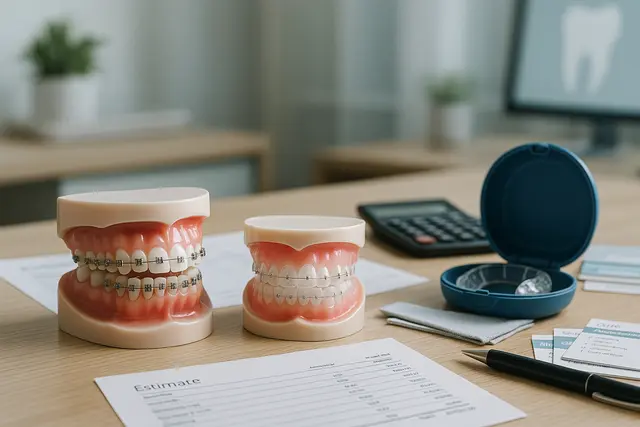
Orthodontics
Retainer That Looks like Braces: Benefits for Long-Term Alignment
A retainer might not get as much attention as braces, but it plays a crucial role in maintaining your smile after orthodontic treatment. Whether you're new to retainers or curious about the type that looks like braces, understanding their purpose and benefits is key to keeping your teeth aligned for the long haul.
6 min read
Sep 15, 2025
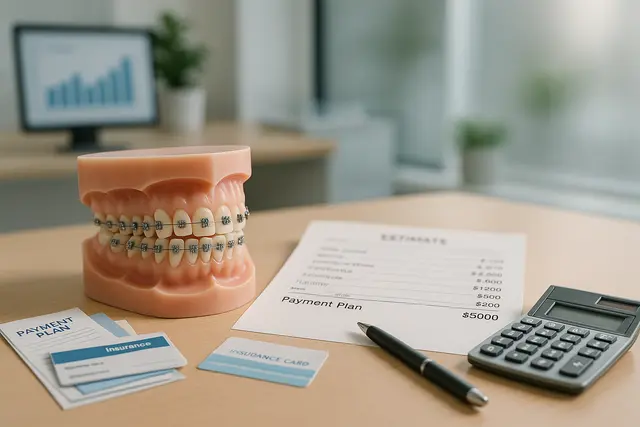
Orthodontics
How Much Are Metal Braces? Cost Comparison With Other Options
Thinking about getting braces but overwhelmed by the cost? You’re not alone. Orthodontic treatment can be a major investment, and understanding the different price points, from metal braces to clear aligners, can help you make a smart, confident decision.
5 min read
Sep 15, 2025
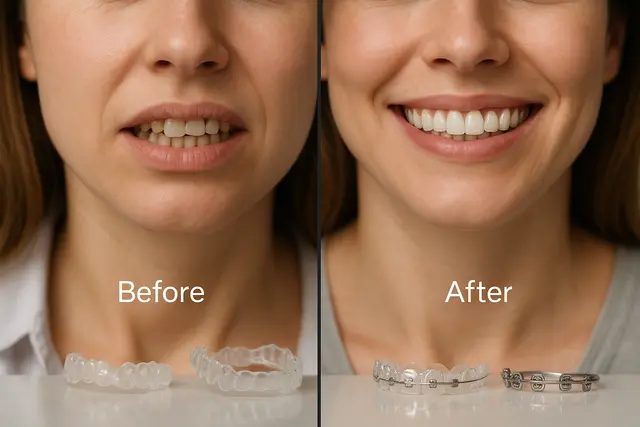
Orthodontics
Teeth Straightening Before and After: How Braces and Aligners Transform Smiles
A straight, confident smile can transform not only your appearance but also your oral health and overall well-being. Modern orthodontic treatments like braces and Invisalign make it possible to correct crowding, bite issues, and misalignments with remarkable results for patients of all ages.
4 min read
Aug 13, 2025
Don’t have time to research every dentist around you?
See why 30k+ patients trusted us